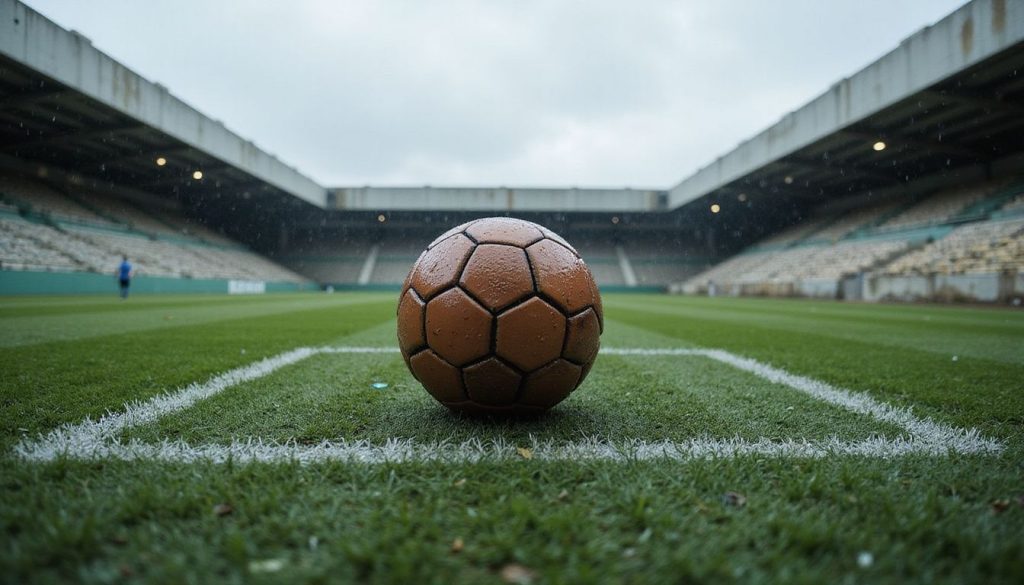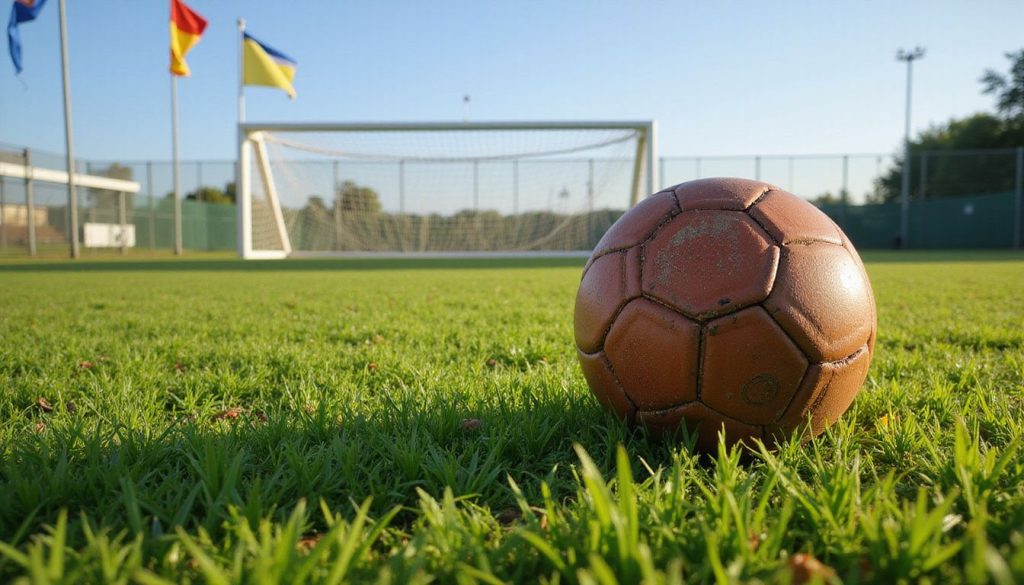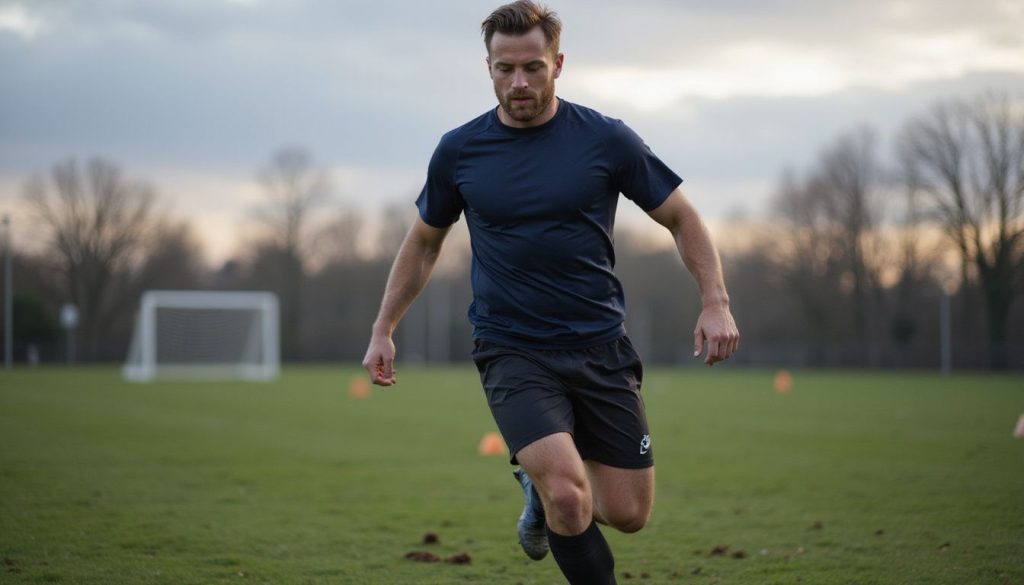Soccer Training Cones Drills
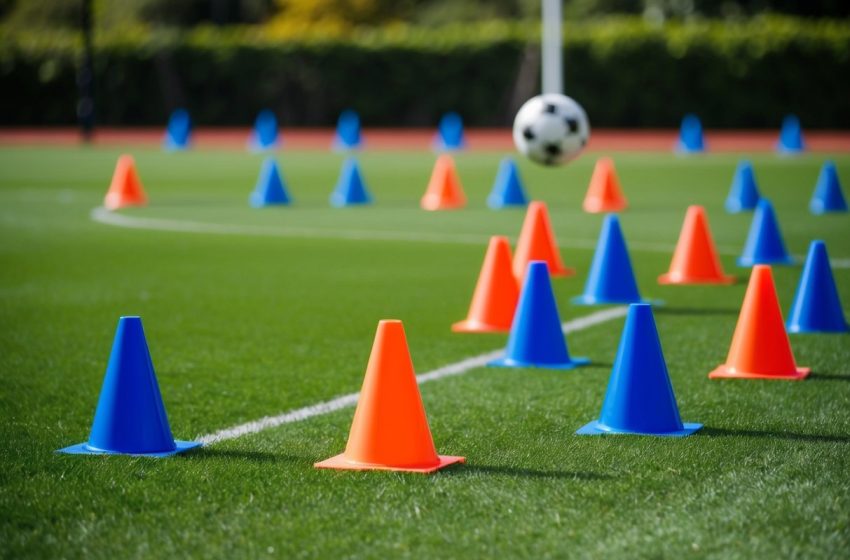
Soccer Training Cones Drills for Fun and Effective Skill Building
Soccer training cones are simple tools that can help you get better at dribbling, speed, and control. Adding cone drills to your practice makes your footwork sharper and teaches you how to move faster with the ball. Whether you’re just starting out or looking to step up your game, these drills can help you improve fast.
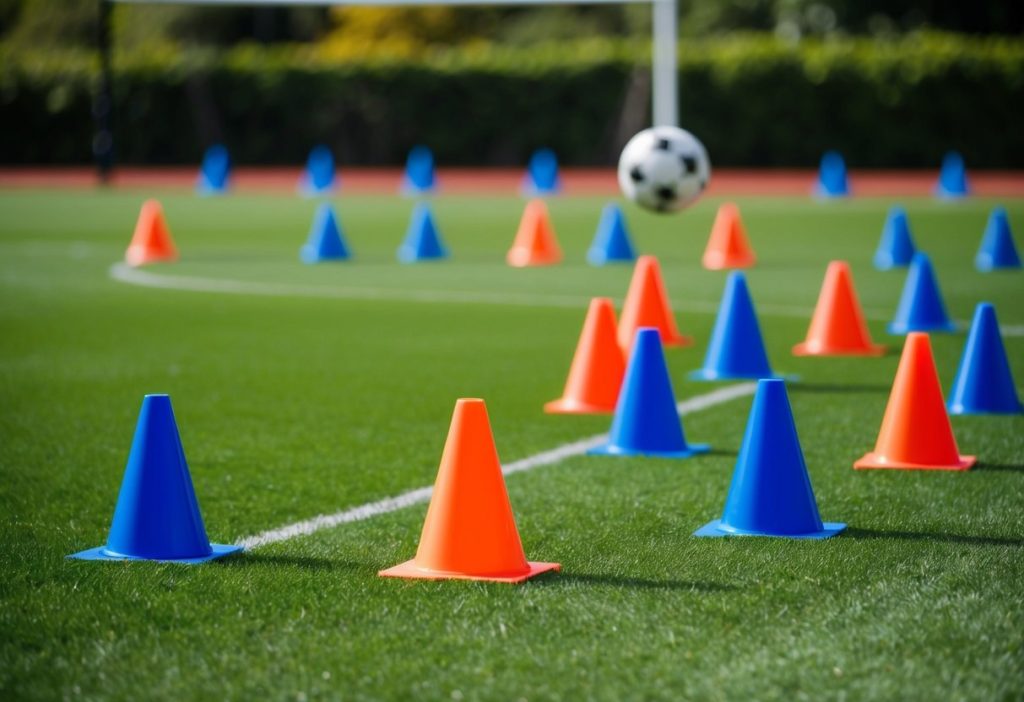
You don’t need fancy equipment or lots of space to get started. With only a few cones and a soccer ball, you can work on weaving, turning, and changing direction. If you stick with it, you’ll notice your confidence growing every time you hit the field.
Understanding Soccer Training Cones

Soccer training cones are a simple but important tool for players of all ages. You can use them in many ways to improve footwork, ball control, speed, and agility.
Types of Soccer Cones
There are several types of soccer cones that you might use in training. The most common are marker cones, which are small, flat, and easy to set up in lines or grids. These let you mark out spaces for drills like dribbling, passing, and turning.
Another popular type is the tall cone, sometimes called a traffic-style cone. These stand higher off the ground and are easier to see from a distance. They work well in agility or weaving drills.
Some cones are collapsible, which means they are soft and bend if you step on them. This makes them safer for kids and easier to pack.
Table: Common Soccer Cone Types
| Type | Features | Best For |
|---|---|---|
| Marker Cones | Flat, disk-shaped | Dribbling, passing |
| Tall Cones | 9-12 inches, solid | Agility, quick changes |
| Collapsible Cones | Flexible, soft | Young players, safety |
You might also see different colors, which can help organize drills or separate groups.
Benefits of Using Cones in Training
Cones help guide players during drills and give clear targets for movement. When you dribble through a row of cone markers, you practice close control and fast footwork. Setting up cones for weaving or slalom drills improves your agility and balance.
Using cones also builds your coordination and helps you react quickly to changes in direction. Coaches often use collapsible cones or brightly colored cones to make drills fun and engaging for younger players.
Cone drills can be adjusted for all skill levels. You can set up easy patterns for beginners or tight spaces for advanced players. This helps everyone get the most out of soccer training and develop their skills step by step.
Essential Soccer Training Cones Drills

Soccer cone drills help you develop important skills like agility, dribbling, and passing. With the right setup, you can build speed, improve ball control, and become more accurate on the field.
Agility Ladder Drills With Cones
Agility ladder drills with cones help you move quicker and change direction fast. Place cones on each side of a flat agility ladder. Step in and out of each space, lifting your knees high. Use quick feet and try to keep your head up.
You can also add side shuffles, hops, or backward steps. This works your legs and core muscles. Moving in different directions with cones challenges your balance. You boost your reaction time and train your body to handle real game situations.
Tip: Keep your movements light and controlled, and always focus on speed, not just completing the drill. Even small improvements in agility can make a big difference when you play.
Cone Dribbling Patterns
Cone dribbling drills build ball control and help you dodge defenders. Line up 6–8 cones in a straight line, spaced 3 feet apart. Dribble the ball in and out of the cones using only the inside of your feet. Focus on keeping the ball close.
Try weaving through the cones with both feet, then turn and go back. You can also use zig-zag patterns or set the cones in a triangle to practice turning. Speed is important, but control matters more.
Common Drills:
- In & Out Weave
- Zig-Zag Dribble
- Triangle Turns
Practicing these patterns makes you better at protecting the ball during games.
Passing Accuracy Using Cone Markers
Passing with cones helps train accuracy and teamwork. Set up pairs of cones about 5 feet apart for passing goals. Stand 10 yards away and try to pass the ball through the cone gate to a partner.
Make it harder by shrinking the space between cones or moving further back. Count how many accurate passes you can make in a row. Focus on using the inside of your foot to control power and keep passes low.
This drill teaches you to read your target and find teammates quickly. It also helps you make better choices under pressure. Practicing with cones is an easy way to track your progress and push yourself to improve accuracy.
Advanced Soccer Cones Exercises

Using soccer cones can help you get faster, react quicker, and defend smarter on the field. These exercises build your agility and teach you how to move with intent, making your soccer training more effective.
Speed and Reaction Drills
Speed and quick reactions are important for winning the ball and making plays. Set up cones in a zigzag, straight line, or random pattern to keep each workout fresh.
Try these cone drills to boost your speed and reaction:
- Shuttle Sprints: Mark out 3-5 cones in a row about 5 yards apart. Sprint to each cone and back, changing direction quickly.
- Zigzag Runs: Place cones in a line, one yard apart. Dribble or sprint while weaving around each cone as fast as you can.
- Random Callouts: Have someone call out cone numbers. Sprint to the called cone while staying balanced and controlled.
For more challenge, use colored cones or add a ball to practice dribbling. Focus on staying low, moving your arms for balance, and pushing off hard with your feet at every turn.
Defensive Positioning With Cones
Defensive training with cones helps you learn to stop attackers and block their path. Start by placing cones in two lines, with about five feet between each cone.
Move forward, backward, and sideways along the cones using quick steps. Always keep your knees bent and your eyes forward. Practice shuffling side-to-side while facing an imaginary opponent, staying in line with them as you move.
Another good drill is the cone close-down. Set up a cone as an “attacker” and another four to eight feet away. Sprint from the first cone to the second, slowing down as you approach—just like you would when closing down an opposing player. This teaches you how to slow your run and stay balanced.
Working with cones in this way can help you improve your defensive footwork, reaction time, and positioning. Stay light on your feet and keep your focus on both the cones and what’s happening around you.
Optimizing Visibility and Safety in Cone Training

When using soccer training cones, you want to see each cone clearly and know they are safe for all players. Picking the right cones and careful placement help prevent accidents and make drills run smoothly.
Choosing High-Visibility Cones
Bright colors like orange, red, or yellow are best for visibility, especially on grass or turf. These colors make it easy for players to spot the cones during fast-moving drills and changing light. Using fluorescent cones can further improve visibility when training early in the morning or late in the evening.
Look for cones made from durable, yet flexible or collapsible material. Collapsible cones are less likely to cause injuries if a player accidentally steps on them. Some cones have reflective strips or extra bright coloring for extra safety during low-light practice sessions.
Keep cones clean so dirt or grass stains don’t make them hard to see. If you train in different areas, consider using a set of cones in more than one bright color. This lets you mark specific drill zones and avoid confusion.
Proper Cone Placement for Safety
Place cones far enough apart that players won’t trip or collide while running drills. Follow a simple rule: leave at least a few feet between each cone, depending on the activity and age of the players. For agility ladders or tight turns, take extra care to space cones based on skill level.
Avoid laying cones in uneven or wet areas where they might slide or tip over. Check the ground for rocks, holes, or other hazards before setting up your cones. If using collapsible cones, make sure they spring back to shape but don’t become a tripping risk.
Tightly mark boundaries and obstacle tracks, but always double-check that the setup keeps play safe. If you tie cones down, use gentle ties through built-in holes so the cones stay in place without making the field dangerous. Regularly walk through your setup to fix any cones that may have moved or toppled during training.
Tips for Maximizing Training With Cones
Having the right approach to taking care of your soccer cones and using them wisely during practice is key. Clean, well-placed cones help your drills run smoothly and keep everyone safe and focused.
Maintaining Soccer Cones
Soccer cones get dirty and can crack or break easily if not handled properly. Regularly wipe them down with a damp cloth to keep them visible on the field. Avoid leaving cones outside in direct sunlight for too long. UV rays can weaken the plastic and cause fading.
Check your cones before each session for any sharp edges or damage. Replace damaged cones right away to prevent injuries. Store them in a bag or container where they won’t get crushed or bent. Keep different sizes and colors organized for quick access.
If you have team equipment, make a quick checklist to keep track of how many cones you have and what condition they’re in. This helps you avoid running out during practice. Well-kept cones last longer and make your soccer training sessions more efficient.
Incorporating Cones Into Team Drills
To get the most out of your soccer training, use cones in a variety of drills. For example, dribbling drills with cones spaced closely together improve ball control. Place cones in zigzag patterns for slalom runs to build agility and footwork.
Include cones to mark clear starting and stopping points. This helps everyone stay organized and reduces confusion during fast-paced games or drills. Make sure spacing is right for the age and skill level of players. For older players, set cones farther apart to increase the challenge.
Mix it up by using cones for relay races, passing lanes, or defending zones. You can even use different colored cones to signal special rules, like “switch feet” zones or “speed up” spots. This keeps drills interesting and helps players focus on key skills.
Frequently Asked Questions
Soccer training cones are flexible tools that help players develop skills like dribbling, ball control, agility, and teamwork. You can use simple cone setups for both beginners and more experienced players.
What are some effective cone dribbling exercises for young soccer players?
Weaving through cones in a straight line or zig-zag pattern improves footwork and ball control. Try adding variations by changing the distance between cones or having players dribble using only their left or right foot.
Drills like the “figure eight” around two cones further boost coordination. Focus on keeping the ball close and moving at a steady pace.
Can you recommend beginner-level soccer drills involving cones for practicing ball control?
Start with a simple cone line, spaced about three feet apart. Dribble the ball in and out of each cone while staying in control.
You can also set up four cones in a square and practice dribbling from one cone to another, stopping and turning at each marker. Using both feet helps improve basic technique.
What is a good number of cones to use when setting up drills for a soccer training session?
Four to six cones are usually enough for basic youth drills. This small number works well for drills like weaving, passing, or creating mini fields.
Use more cones if you’re working with a larger group or need to create more stations. Five cones can also form a pentagon for different dribbling patterns.
How can coaches set up a mini soccer field using training cones for practice games?
Use cones to mark out the four corners of the field. You can also add two cones at each end for goalposts.
Adjust the size based on the space and the number of players. Small-sided games can use a field as little as 20 by 30 feet for young kids.
What are some fun cone drills to help kids improve their soccer skills?
Try “cone wars” where two players race to touch or dribble around a cone first. Relay races weaving through cones make training exciting.
Include teamwork drills, like passing the ball around a circle of cones, to keep everyone engaged. Play games where players have to dribble to a cone and back as quickly as possible.
Where can I find a downloadable PDF with various soccer cone drilling exercises?
Many soccer coaching websites offer free PDF downloads of cone drills. You can search for “soccer cone drill PDF” or visit coaching resource pages from youth soccer associations.
Some sports training apps also provide printable drill guides with step-by-step instructions and diagrams.

